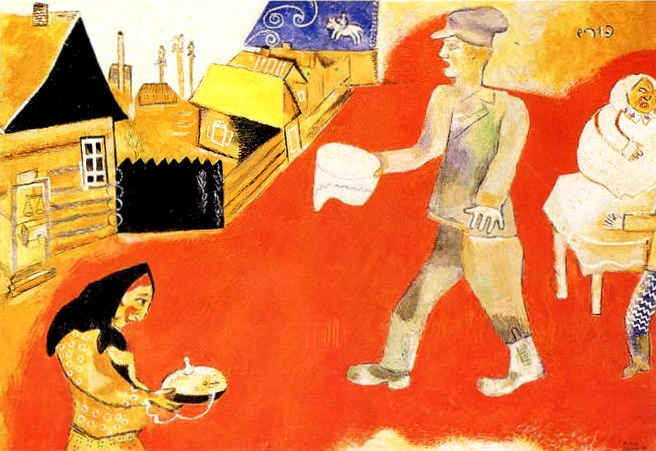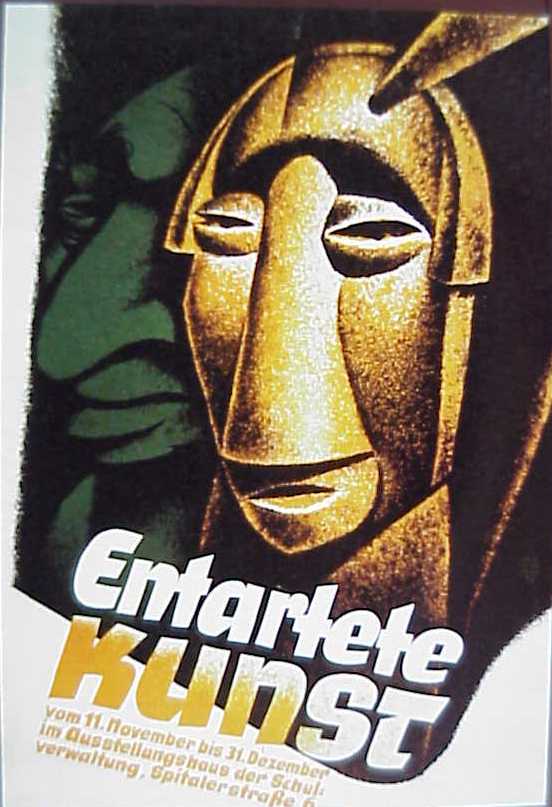LOS ANGELES TIMES: Marc Chagall was an enormously popular 20th century painter, revered by the public for his rooftop fiddlers, biblical lore, upside down lovers and fanciful visions of Jewish shtetl life in the old Russian empire. Art historians and critics, however, have always had difficulty placing him among the many currents of modern art; to them, he often seemed unique, special, one of a kind. Some also found him repetitive and sentimental. But Chagall was not always a loner. In an innovative exhibition, the Philadelphia Museum of Art has decided to concentrate on his younger years when, far from unique, he and a band of mainly East European, mainly Jewish artists honed their craft in Paris. The show, “Paris Through the Window: Marc Chagall and His Circle,” closes July 10. Made up mostly of paintings from the Philadelphia museum’s own collection, the show, which displays Chagall alongside his contemporaries, goes nowhere else. MORE
RELATED: As a symbol of culture, freedom, and modernity, the city of Paris held a magnetic attraction for artists from Eastern Europe during the early decades of the twentieth century. This exhibition will include around 40 paintings and sculptures by these artists, all of which were created in a unique atmosphere of mutual encouragement and support in Paris before the Second World War. The exhibition will focus in particular on the paintings that Chagall made between 1910 and 1920, including the artist’s early masterpiece Half Past Three (The Poet), of 1911, which has long been considered one of the great treasures of the Philadelphia Museum of Art. MORE
RELATED: Before the Nazi rise to power, the Museum Folkwang in Essen was a leader in the collecting and display of modern art in Germany. By  1934 Hitler’s government had dismissed the Folkwang’s progressive director and replaced him with the ardent Nazi Count Klaus von Baudissin, an SS officer and art historian. One of the Count’s first acts was to paint over the museum’s famous murals by the German Expressionist Oskar Schlemmer. Baudissin also served on the Ziegler commission, responsible for impounding “degenerate” art from German museums. From the Museum Folkwang the commission seized and dispatched to Munich an astounding total of 1,202 works of art, including Chagall’s Purim, now in the Philadelphia Museum of Art’s Louis E. Stern Collection. The painting—the Folkwang’s only Chagall—had been acquired in the 1920’s by the previous director, Ernst Gosebruch.1 Set in a Russian town, its theme is the celebration of Jewish festival of Purim, which commemorates the deliverance of the Persian Jews. In the center a boy carries Purim sweets from the market stall-keeper on the right. Nazi officials chose Purim, along with three other works by Chagall, for display in the notorious Degenerate Art exhibition. MORE
1934 Hitler’s government had dismissed the Folkwang’s progressive director and replaced him with the ardent Nazi Count Klaus von Baudissin, an SS officer and art historian. One of the Count’s first acts was to paint over the museum’s famous murals by the German Expressionist Oskar Schlemmer. Baudissin also served on the Ziegler commission, responsible for impounding “degenerate” art from German museums. From the Museum Folkwang the commission seized and dispatched to Munich an astounding total of 1,202 works of art, including Chagall’s Purim, now in the Philadelphia Museum of Art’s Louis E. Stern Collection. The painting—the Folkwang’s only Chagall—had been acquired in the 1920’s by the previous director, Ernst Gosebruch.1 Set in a Russian town, its theme is the celebration of Jewish festival of Purim, which commemorates the deliverance of the Persian Jews. In the center a boy carries Purim sweets from the market stall-keeper on the right. Nazi officials chose Purim, along with three other works by Chagall, for display in the notorious Degenerate Art exhibition. MORE
RELATED: On July 19, 1937, the “Degenerate Art” exhibition opened in the Hofgarten arcades of Munich’s Residenz. It included 650 works of art confiscated from 32 German museums. For the National Socialists, the term “degenerate” applied to any type of art that was incompatible with their ideology or propaganda. Whole movements were labeled as such, including Expressionism, Impressionism, Dada, New Objectivity, Surrealism, Cubism, and Fauvism, among others. Many of Germany’s most talented and innovative artists suffered official defamation: for example, George Grosz, Ernst Ludwig Kirchner, Max Ernst, Karl Schmidt-Rottluff, Max Pechstein, Paul Klee, and Ernst Barlach. Avant-garde artists and museum directors who  purchased or exhibited modern art had already been barred from professional activity as early as 1933. With this exhibition, the visual arts were forced into complete submission to censorship and National Socialist “coordination” [Gleichschaltung]. Initiated by Minster of Propaganda Joseph Goebbels and President of the Reich Chamber of the Visual Arts Adolf Ziegler (1892-1959), the exhibition travelled to twelve other cities from 1937 to 1941. In all, the show drew more than 3 million visitors. The exhibition sought to demonstrate the “degeneration” of artworks by placing them alongside drawings done by the mentally retarded and photographs of the physically handicapped. These comparisons aimed to highlight the “diseased,” “Jewish-Bolshevist,” and inferior character of these artworks and to warn of an impending “cultural decline.” As an exercise in contrast, the opposite – good, “healthy,” “German” art – could be seen in the “Great German Art Exhibition,” on view only a few meters away.
purchased or exhibited modern art had already been barred from professional activity as early as 1933. With this exhibition, the visual arts were forced into complete submission to censorship and National Socialist “coordination” [Gleichschaltung]. Initiated by Minster of Propaganda Joseph Goebbels and President of the Reich Chamber of the Visual Arts Adolf Ziegler (1892-1959), the exhibition travelled to twelve other cities from 1937 to 1941. In all, the show drew more than 3 million visitors. The exhibition sought to demonstrate the “degeneration” of artworks by placing them alongside drawings done by the mentally retarded and photographs of the physically handicapped. These comparisons aimed to highlight the “diseased,” “Jewish-Bolshevist,” and inferior character of these artworks and to warn of an impending “cultural decline.” As an exercise in contrast, the opposite – good, “healthy,” “German” art – could be seen in the “Great German Art Exhibition,” on view only a few meters away.
[Pictured left] is the cover of the guidebook to the “Degenerate Art” exhibition; the cover features Otto Freundlich’s monumental sculpture, Der neue Mensch [The New Man] (1912), which had been confiscated from the Museum für Kunst und Gewerbe in Hamburg. Freundlich, a German painter and sculptor of Jewish origin, spent much of his career in France. He was arrested in Nazi-occupied France in February 1943 and sent to the Majdanek concentration camp in Lublin (Poland), where he was murdered on March 3, 1943. MORE
